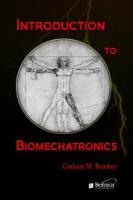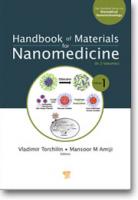Descrição
CONTENTS:
1. Introduction to Biomechatronics
1.1 Introduction
1.2 Biomechatronic Systems
1.3 Physiological Systems
1.4 Summary of Contents
1.5 The Future of Biomechatronic Systems
1.6 References
2. Sensors and Transducers
2.1 Introduction
2.2 Switches
2.3 Power Supplies
2.4 Sensors and Transducers
2.5 Electrodes
2.6 References
3. Actuators
3.1 Introduction
3.2 Electromechanical Actuators
3.3 Hydraulic Actuators
3.4 Pneumatic Actuators
3.5 Shape Memory Alloy
3.6 Mechanical Amplification
3.7 Prosthetic Hand Actuation
3.8 References
4. Feedback and Control Systems
4.1 Introduction
4.2 Biological Feedback Mechanisms
4.3 Biomechatronic Feedback Mechanisms
4.4 System Representation
4.5 System Models
4.6 System Response
4.7 System Stability
4.8 Controllers
4.9 Controller Implementation
4.10 References
5. Signal Processing
5.1 Introduction
5.2 Biomedical Signals
5.3 Signal Acquisition
5.4 Analog Signal Processing
5.5 Digital Signal Processing
5.6 Statistical Techniques and Machine Learning
5.7 Isolation Barriers
5.8 References
6. Hearing Aids and Implants
6.1 Introduction
6.2 What Is Sound?
6.3 How Hearing Works
6.4 Hearing Loss
6.5 Hearing Aids
6.6 Bone Conduction Devices
6.7 Middle Ear Implants
6.8 Direct Acoustic Cochlear Stimulatory Devices
6.9 Cochlear Implants
6.10 Auditory Brainstem Implants
6.11 References
7. Sensory Substitution and Visual Prostheses
7.1 Introduction
7.2 Anatomy and Physiology of the Visual Pathway
7.3 Main Causes of Blindness
7.4 Optical ProstheticsGlasses, Thermal Imagers, Night Vision
7.5 Sonar-Based Systems
7.6 Laser-Based Systems
7.7 Sensory Substitution
7.8 GPS-Based Systems
7.9 Visual Neuroprostheses
7.10 The Future
7.11 References
8. Heart Replacement
8.1 Introduction
8.2 The Heart as a Pump
8.3 HeartLung Machines
8.4 Artificial Hearts
8.5 Ventricular Assist Devices
8.6 Engineering in Heart Assist Devices
8.7 Pump Types
8.8 References
9. Respiratory Aids
9.1 Introduction
9.2 Construction
9.3 The Mechanics of Respiration
9.4 Energy Required for Breathing
9.5 Measuring Lung Characteristics
9.6 Mechanical Ventilation
9.7 The Physics of External Negative-Pressure Ventilation
9.8 Positive-Pressure Ventilators
9.9 References
10. Active and Passive Prosthetic Limbs
10.1 Introduction
10.2 Structure of the Arm
10.3 Kinematic Model of the Arm
10.4 Structure of the Leg
10.5 Kinematic Model of the Leg
10.6 Kinematics of Limb Movement
10.7 Sensing
10.8 Passive Prosthetics
10.9 Active Prosthetics
10.10 Prosthesis Suspension
10.11 References
Index




